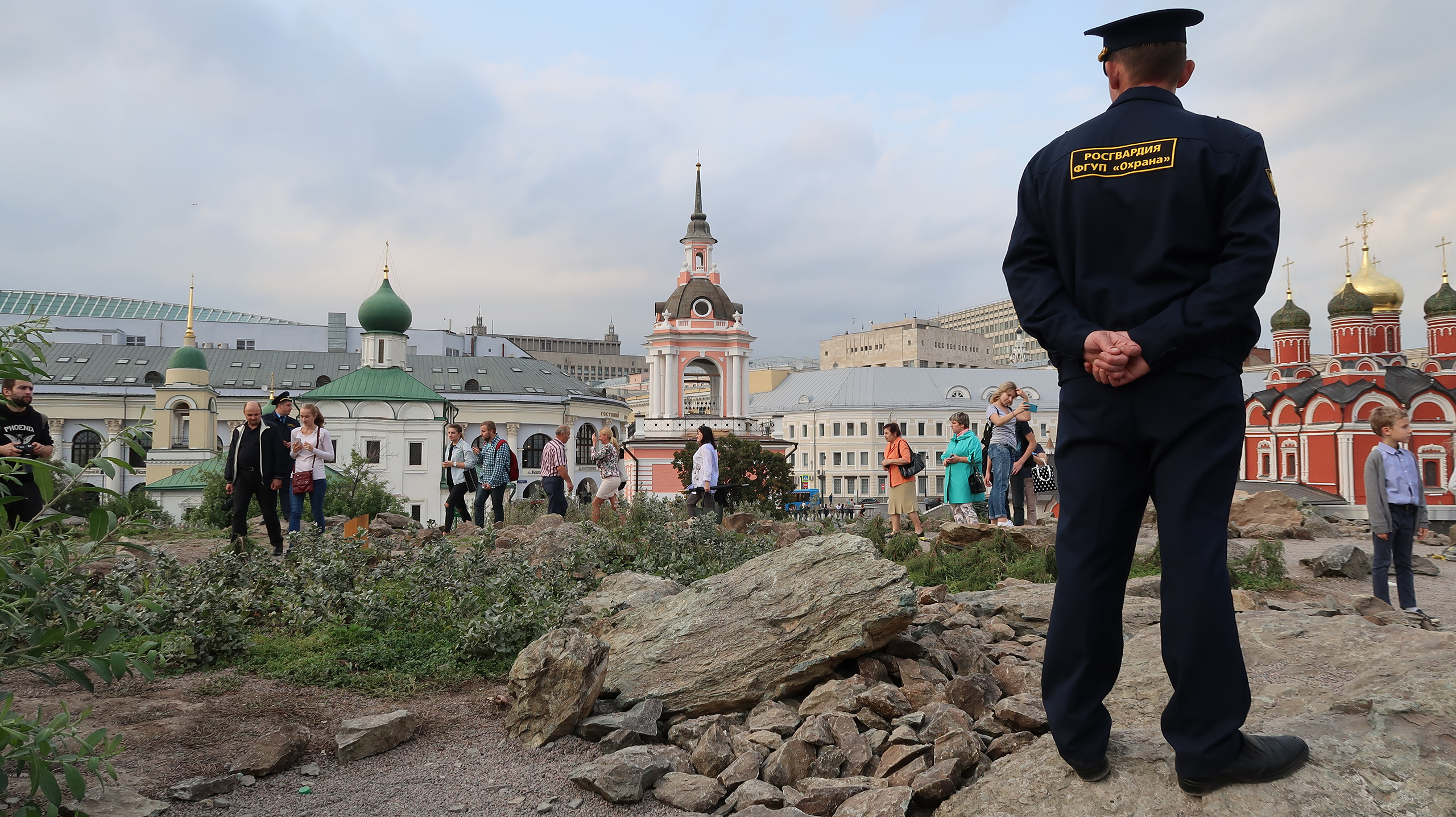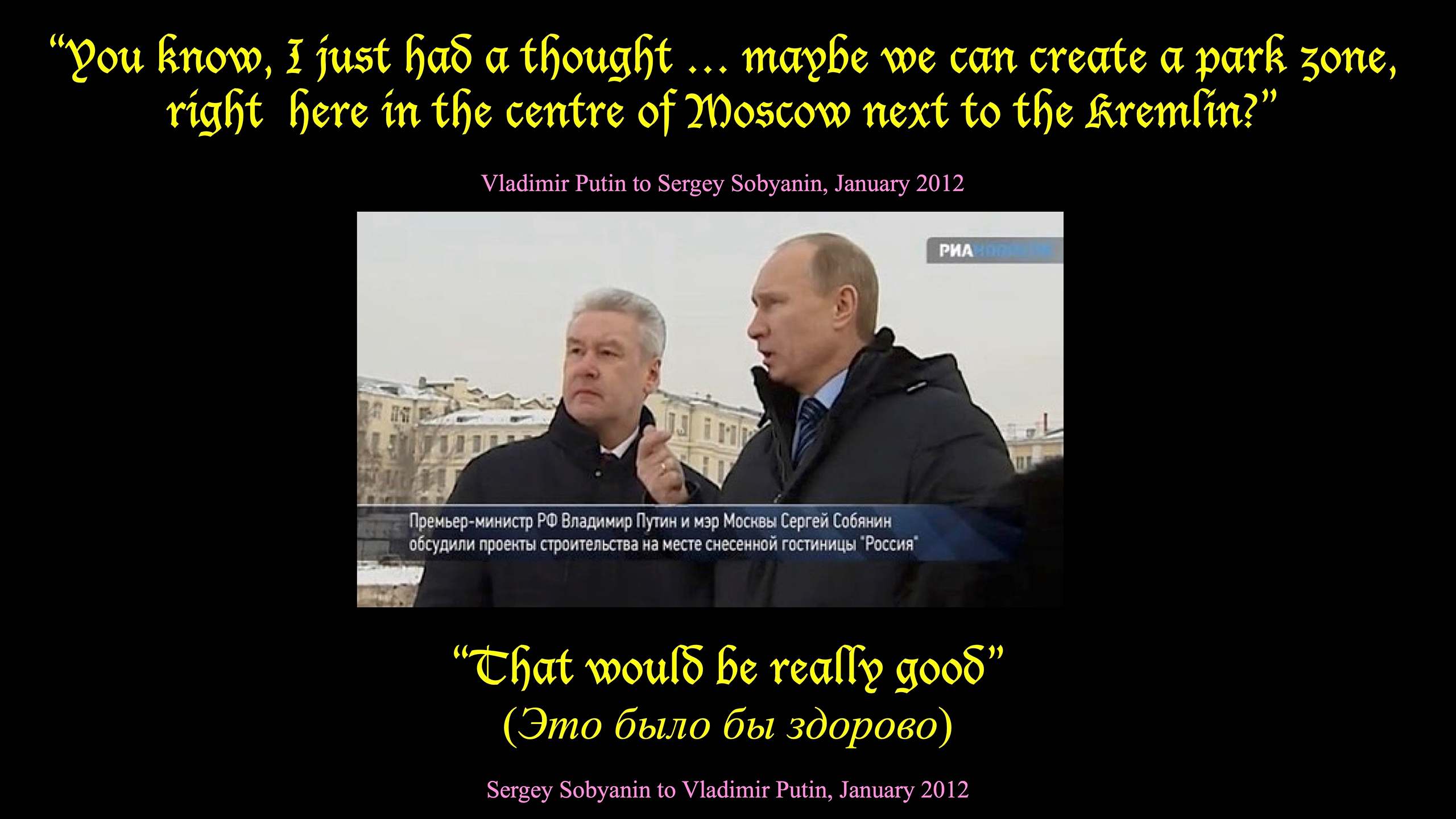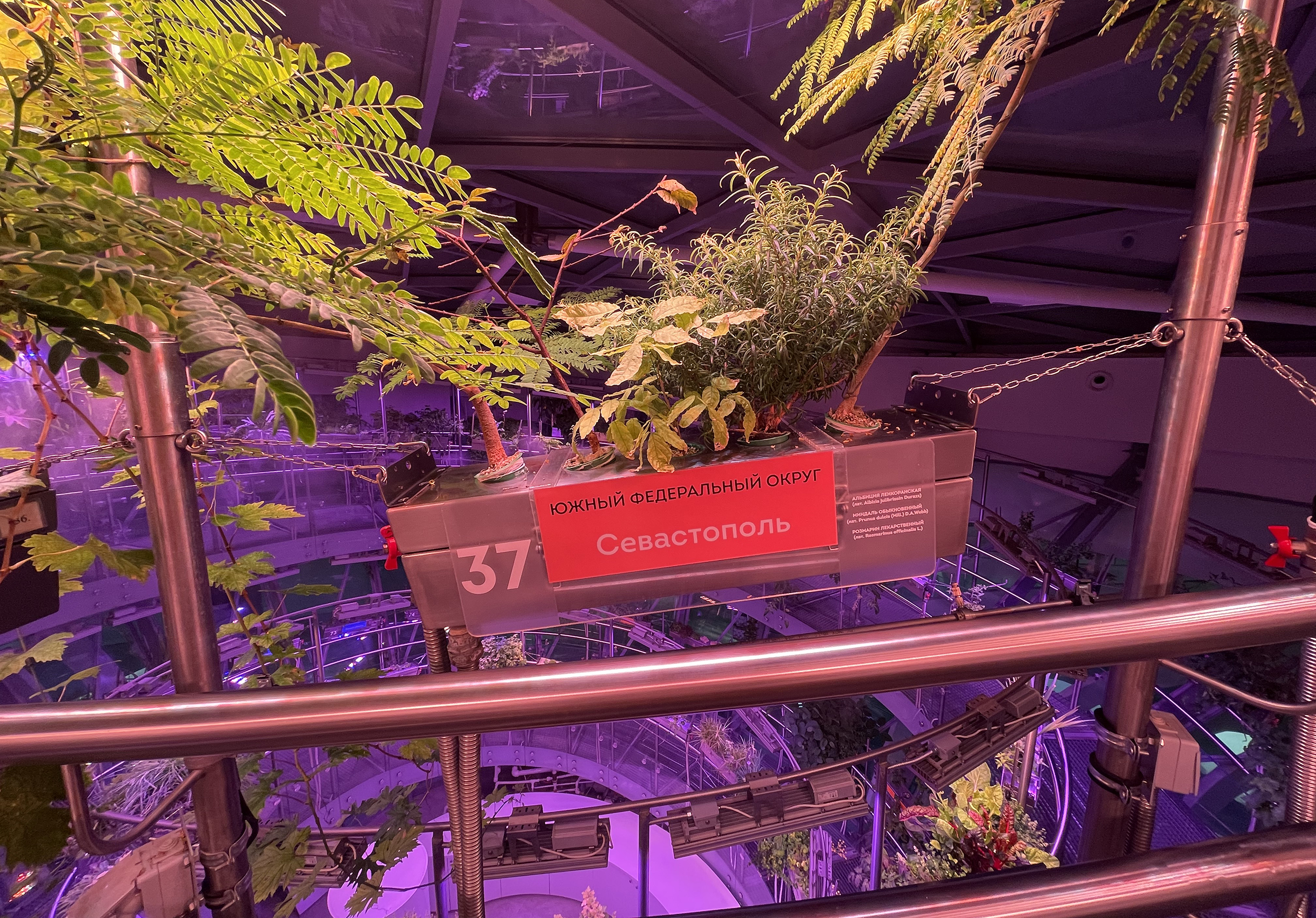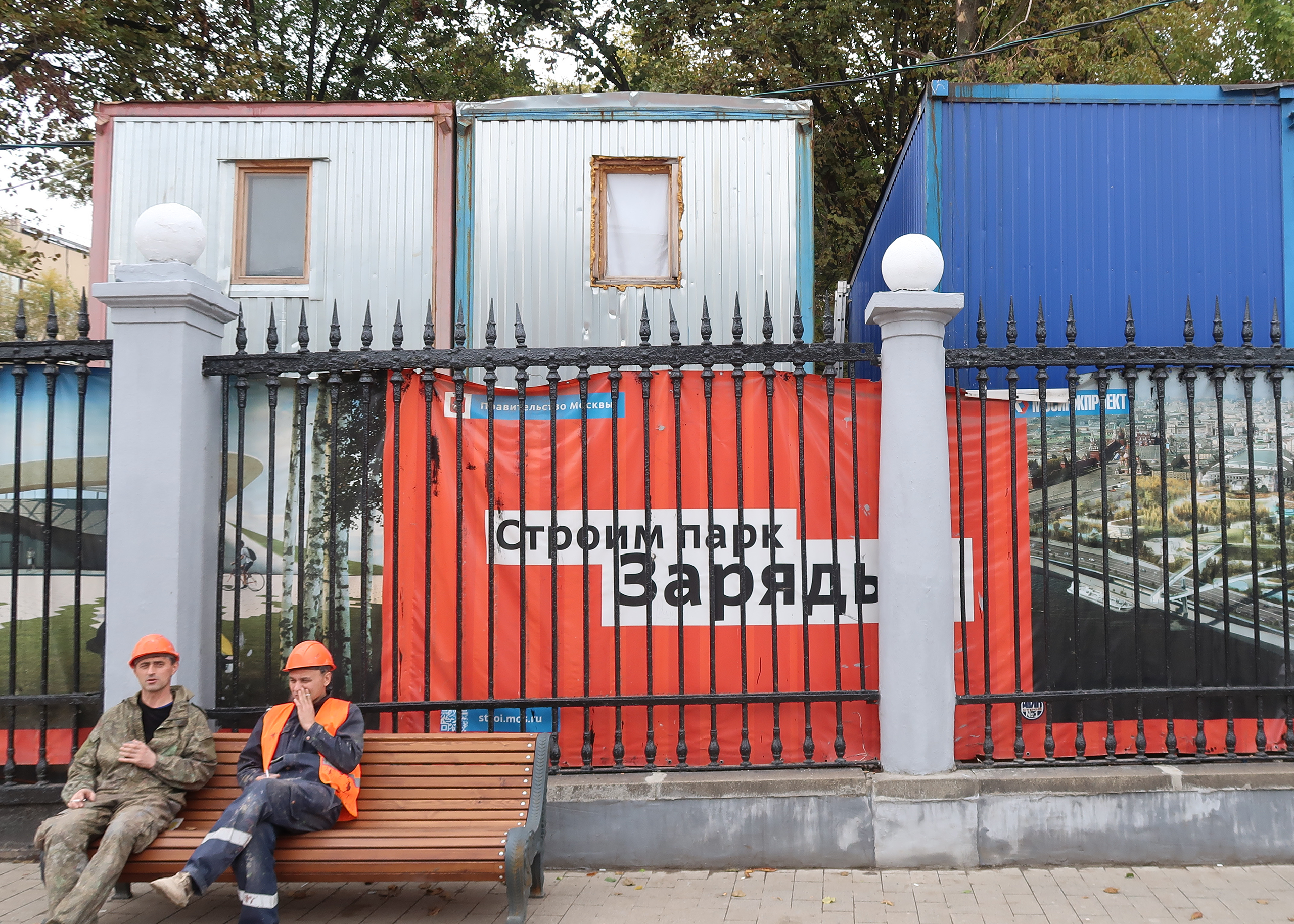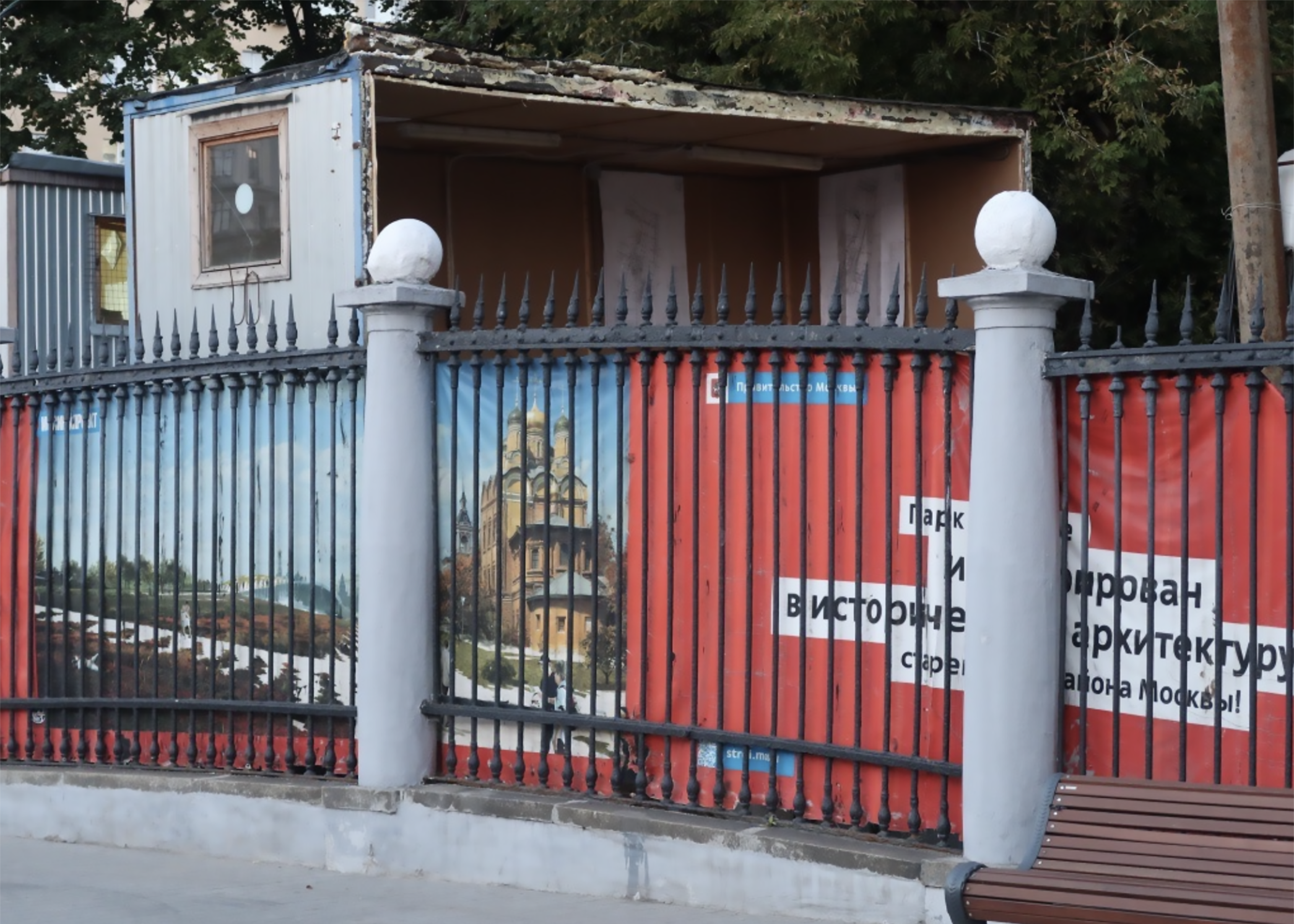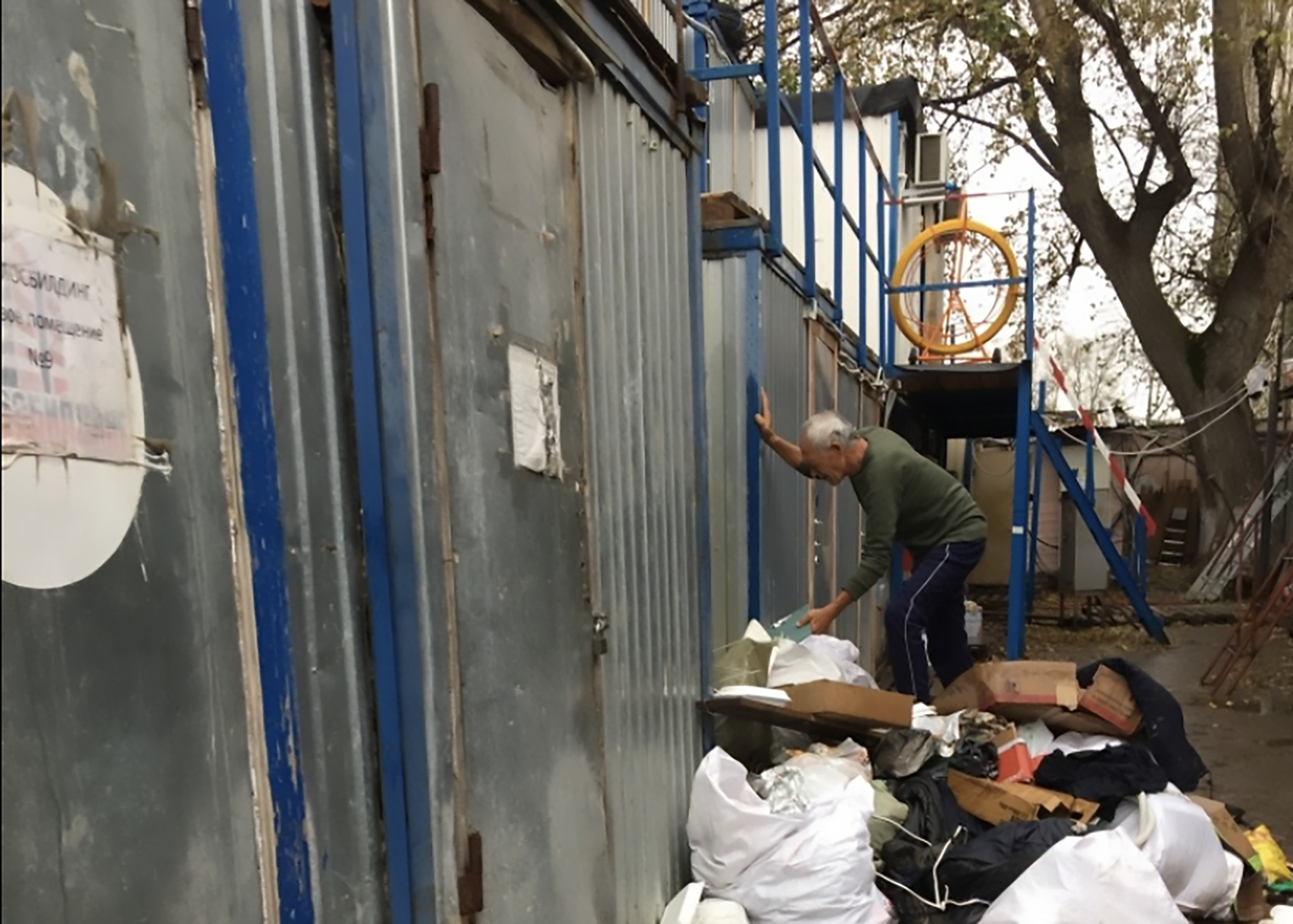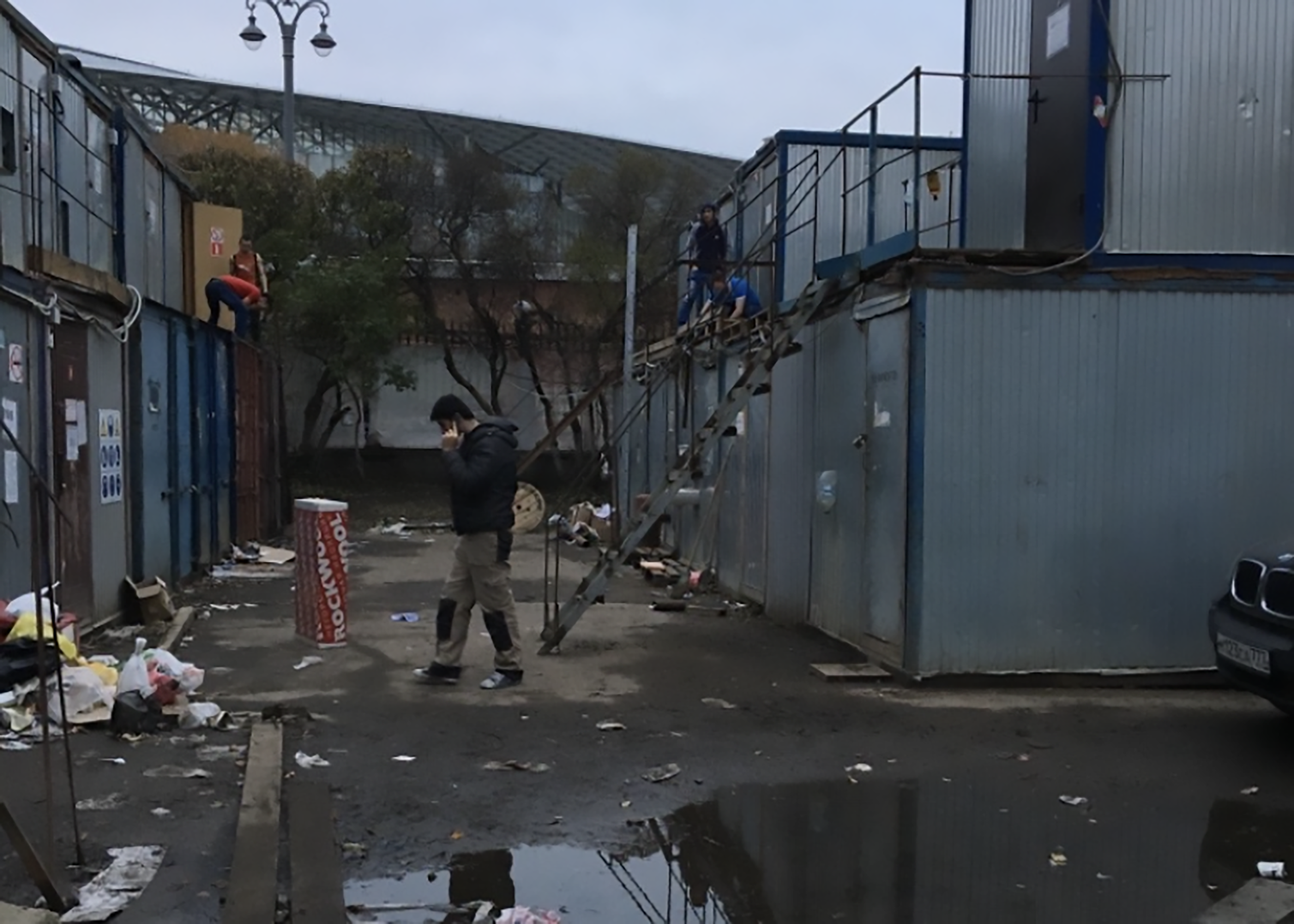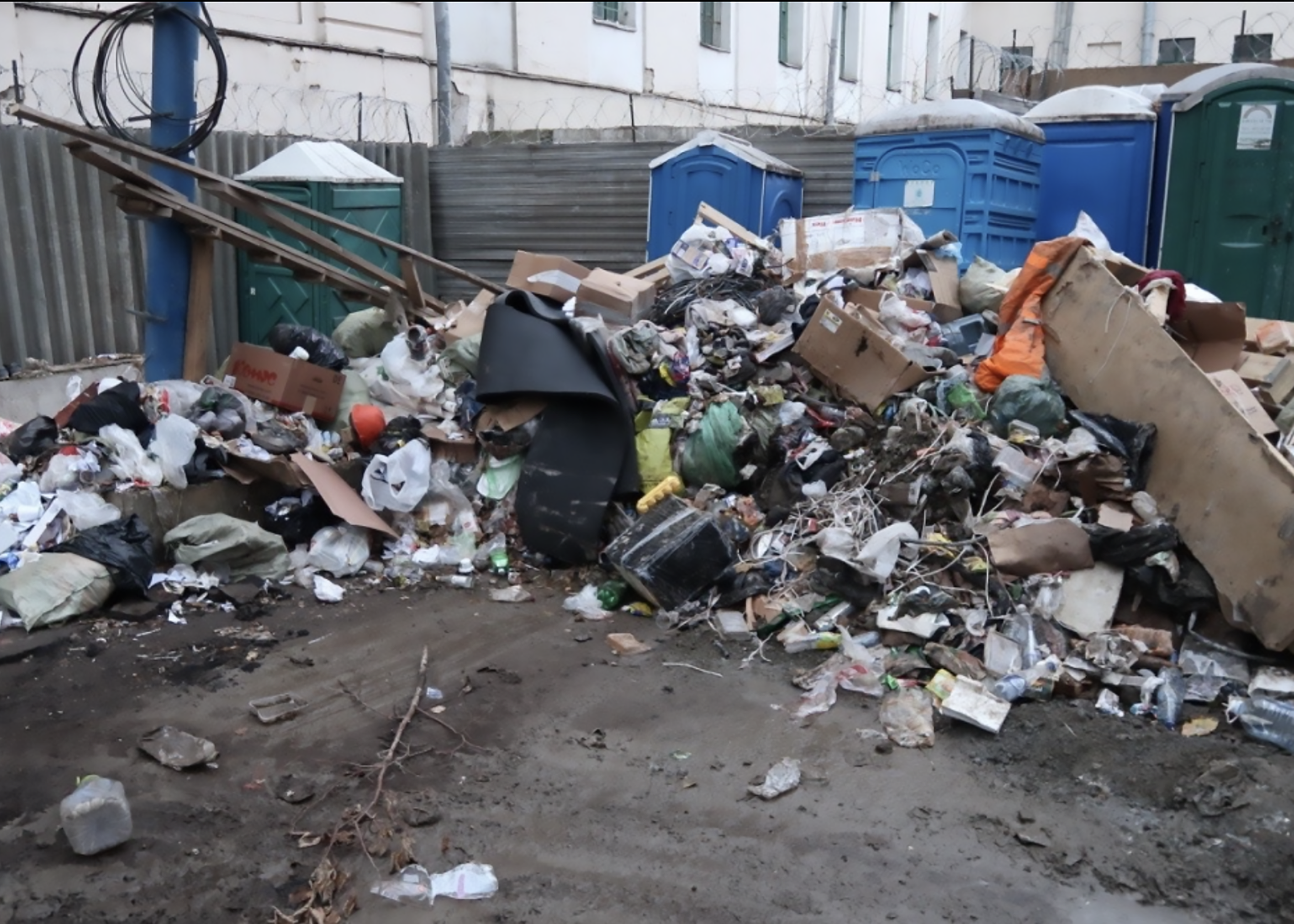From Culture Tree to Culture Z: War, Empire and Putin-Era Urbanism
The Political Geometry of Russia’s Re-Colonial War
The coloniality of Russia’s war on Ukraine manifests itself on a diversity of scales and in a variety of contexts. The war is colonial on the centrifugal level of a vast post-imperial petro-state attempting to assert its ownership over a neighboring country one-thirtieth of its size. But it is also colonial on the centripetal level, of the Russian state reaching its tentacles into its inner and outer peripheries, plucking out poor young men of color from predominantly (but not exclusively) Muslim indigenous groups and national minorities—the post-imperial petro-states’s colonial proletarian subalterns—and sending them to kill and to be killed in Ukraine.[1]
Russia’s floundering war is the par excellence manifestation of Putin’s half-baked, pathological project to recreate post-Soviet Russia as a modernized imperial state: a self-avowedly reactionary neo-fascist recolonial entity, coalescing under the banner of the swastika-like Latin letter “Z”, colonizing its interior as well as its exterior; eclectically fracking its own and its neighbors’ pasts—medieval, imperial and Soviet—for distorted narratives of glory and prowess; trolling and attempting to undermine others’ (whether Ukraine’s or the so-called “collective West’s”) claims to historical or ideological legitimacy.
One of the most bizarre among Putin’s increasingly unhinged war speeches came on 3 March 2022. Awarding a posthumous Hero of Russia award to a soldier from Dagestan who died in Ukraine, Putin put himself forward as a sovereign personification of the centripetal imperial diversity of Russia; and as a personalized microcosm of Russia’s colonial war: “I am an [ethnically] Russian [russkii] person—my family history goes full circle from Ivan to Maria. But when I see examples of such heroism as the accomplishments of the young Nurmagomed Gadzhimagomedov, a Dagestan-born ethnic Lak, I want to say: I am a Lak, I am a Dagestani, I am Chechen, I am an Ingush, Russian, Tatar, Jew, Mordvin, Ossetian.” [2]
Russian public culture, public space and architecture revels in these kinds of centripetal condensations of imperial diversity—they crop up endlessly in my research on architecture and politics in post-Soviet Russia. In Moscow’s Zaryadye Park—an American-designed, Kremlin-abutting landscape park-cum-multimedia attraction, opened in 2017 by Vladimir Putin on the site of the demolished 1960s Hotel Rossiya—Russia’s multifarious vegetal and geological diversity is showcased in four discrete sub-sections, each one representing (or, rather, caricaturing) one of the country’s so-called “landscape zones” (tundra, taiga, steppe and forest lowlands). Each landscape zone is populated by a constantly rotating selection of plant species, comprising “over 180 botanical species selected by the park’s experts”, which “reflect the country’s natural wealth—from stony tundra landscapes to the aromatic wild grasses of the southern Russian steppe.”[3]
In the park’s Tatlin Tower-esque Florarium, a spiral staircase is bedecked with stainless steel planters from which sprout vegetal and floral metonyms for each one of the country’s 82 administrative divisions. The apex of the spiral, and the vertical culmination of the Florarium’s eco-imperial narrative, are the planters containing booty flora: silk trees, prunes, rosemary, grapes and lavender, hailing from the two administrative territories of Ukraine temporarily occupied in 2014 by Russia’s armed forces: the Autonomous Republic of Crimea and the city of Sevastopol.
Another act of gathering accentuated in Zaryadye is a culinary one. The cuisines of all Russia and of the entire post-Soviet space are collected in the lavishly-designed (and indulgently-priced) food court, the Zaryadye Gastronomic Centre. A still-more-expansive range of even more expensive post-Soviet cuisines (and extra-terrestrial aesthetics) is served in the monumental, cosmically-themed, neo-futurist Voskhod [Dawn] restaurant (named after a famous Soviet era space rocket program)—whose design is (unintentionally) suggestive of two leading tendencies in Russian contemporary art, the “leftist” Eurasianist “neo-Cosmic” artworks of Arseniy Zhilaev, but also the openly fascist creations of Alexey Belaev-Gintovt. There are levitating plant pots, cosmonaut flower vases sprouting red carnations, bas-reliefs of demiurgic workers and collective farm workers (Vera Mukhina meets Michelangelo) and solar system chandeliers.
The menu is inspired by the idea that “regardless of geopolitical realities the space of the former republics of the USSR is forever associated in our consciousness with united culinary traditions”. Soviet nostalgia morphs seamlessly into imperial longing: “In the Voskhod restaurant, the cuisines of the nations of the former USSR unite into a single universal Russian cuisine.” Somewhat distressingly, for this author, the menu also features бигус (bigos), openly described as “Polish hunter’s stew” in the English version of the menu, though not in the Russian one. Working on the restaurant (which was initially to be called Soyuz, before this name was boycotted by the municipality for being too Soviet) its designers—the Sundukov sisters—told me, they developed two core design ideas in consultation with the restaurant proprietor, celebrity chef Alexander Rapport: “nostalgia for an unrealized future”; and “the Soviet Union without shortages” [советский союз без дефицитов]. In other words, on a gastronomic level at least, Zaryadye Park projects itself at once a privately-financed simulation of socialist plenty; and a nostalgic fantasy of a re-colonial Russia.
Perhaps the most significant process of gathering enacted and embodied by Zaryadye highlights intersecting processes of migration and racialized labour exploitation deeply entrenched within Russia’s body politic and political economy. In the workers’ gorodok—a slum-like encampment concealed from street-level view by a fence hung with luscious renderings of the completed park—the builders of Zaryadye, the greater part of the migrants from the Central Asian republics, the Caucasus and the Russian provinces, eat, rest, sleep and gather.[4] These laborers—working on precarious contracts, for low pay and in treacherous conditions—are the underclass building the capital of Culture Z.
Centrifugal Blagoustroistvo
This transformational project of the wholesale renewal of Russia’s public spaces, referred to in Russian by the untranslatable word blagoustroistvo (literally “the arrangement of blessings“)—of which Zaryadye is the flagship project—is now being exported with greater zeal than ever beyond Moscow, to the whole of Russia, and to the post-Soviet space beyond. The consulting bureau Strelka KB, which today employs over 300 people, is applying the Moscow makeover model in 400 municipalities from Grozny to Svobodny; while mutations and clones (or “colonies”) of Gorky Park and Zaryadye Park are springing up in towns and cities from Krasnodar to Baku.
The question of Zaryadye’s—and blagoustroistvo’s—colonial nature featured prominently, also, in public discussions, which I organized in the course of my Moscow research (we called these discussions “Zaraydyological” roundtables). During the fifth roundtable, held in a Moscow gallery in December 2017, political theorist and journalist Sergey Medvedev characterized Zaryadye as representing “all the diversity of a type of Russian internal colonization”. Here, he added, “internal colonisation takes the form of an act of violence committed against nature”. Zaryadye, Medvedev wrote in a Facebook post, which summarized and extended the arguments he made during the discussion, “is a space of imperial nostalgia … which arises from this landscape-culinary stuffing, from this hybrid kulebyak, this colonial Disneyland, this monument to fakery of the post-truth era.”
The most vivid, and aggressive, reaction to the invocation of colonialism was delivered by critic and businessman Grigory Revzin, who has for at least two decades been Russia’s leading and most outspoken architecture critic. Today, Revzin is a founding partner and chief ideologist of the consultancy firm KB Strelka, which is now part-owned—since its acquisition by Vneshekonombank, Russia’s development bank—by the state. KB Strelka’s meteoric rise is integrally tied to that of Zaryadye—back in 2013, when it still operated as a tiny, embryonic unit within the education-oriented Strelka Institute, the future bureau’s breakthrough consultancy commission was the coordination of the international architectural competition for Zaryadye on behalf of the Moscow municipality. Responding to one discussion participant’s question about the colonial-or-not nature of Strelka’s diffusion of the Zaryadye model of urban transformation throughout Russia, said Revzin:
“Since you mention KB Strelka … yes, of course, we are terrible, a veritable General Staff of the colonial armies … which are at this moment conquering Russia, it is us, we are crushing all the cities, exploiting them towards blagoustroistvo (…) And, in effect, there are 1,112 cities in Russia now and we are doing half of them (…) I work here like Goebbels, like the ideologist of this colonial process … and, of course, I am terribly worried by this prospect of [impending] colonialism, but I would like to continue moving in this direction”.
I will leave these unsettling words—spoken in a register both ironic and sincere at the same time—without comment.
Portents of Fascism: War as Structure-in-Dominance
It is disturbing—but in retrospect not even remotely surprising—to see the same kind of centre-condensing logic, which is materialized in architectural, ecological, culinary and human form in Zaryadye and other kindred projects, mirrored in the imperial rhetoric of Russia’s war. The physical violence of Russia’s war directly replicates the symbolic and structural violence written into the Russian everyday. The landscape and program of Zaryadye Park (and kindred projects) is heaving with more-or-less latent portents, symptoms and processes of fascism, war and militarized imperial yearning. These portents are drenched with incompatible, contradictory symbolism and ideological messaging: Soviet and Tsarist, luddite and futurist, bellicose and bucolic.
One of the main questions I try to shed light on in my work on Moscow is the question of the purported “fakeness” of Zaryadye (and other kindred architectural projects).[5] If, as my fieldwork interlocutors very often claimed, these projects are indeed fake, then what kind of reality are they trying to conceal? What, furthermore, do these “falsity claims” say about vernacular and ethnographic understandings of “reality” operating in post-Soviet public culture. In my analysis, I identify labour as the critical infrastructure disavowed by contemporary Moscow’s escapist leisurescapes. The numerous centrifugal and centripetal processes enacted by Zaryadye all rest on a foundational, but disavowed, act of gathering: that of the coming-together of the labor force of all Russia (and the vast post-Soviet space beyond) on one site in the heart of the re-colonizing metropole.
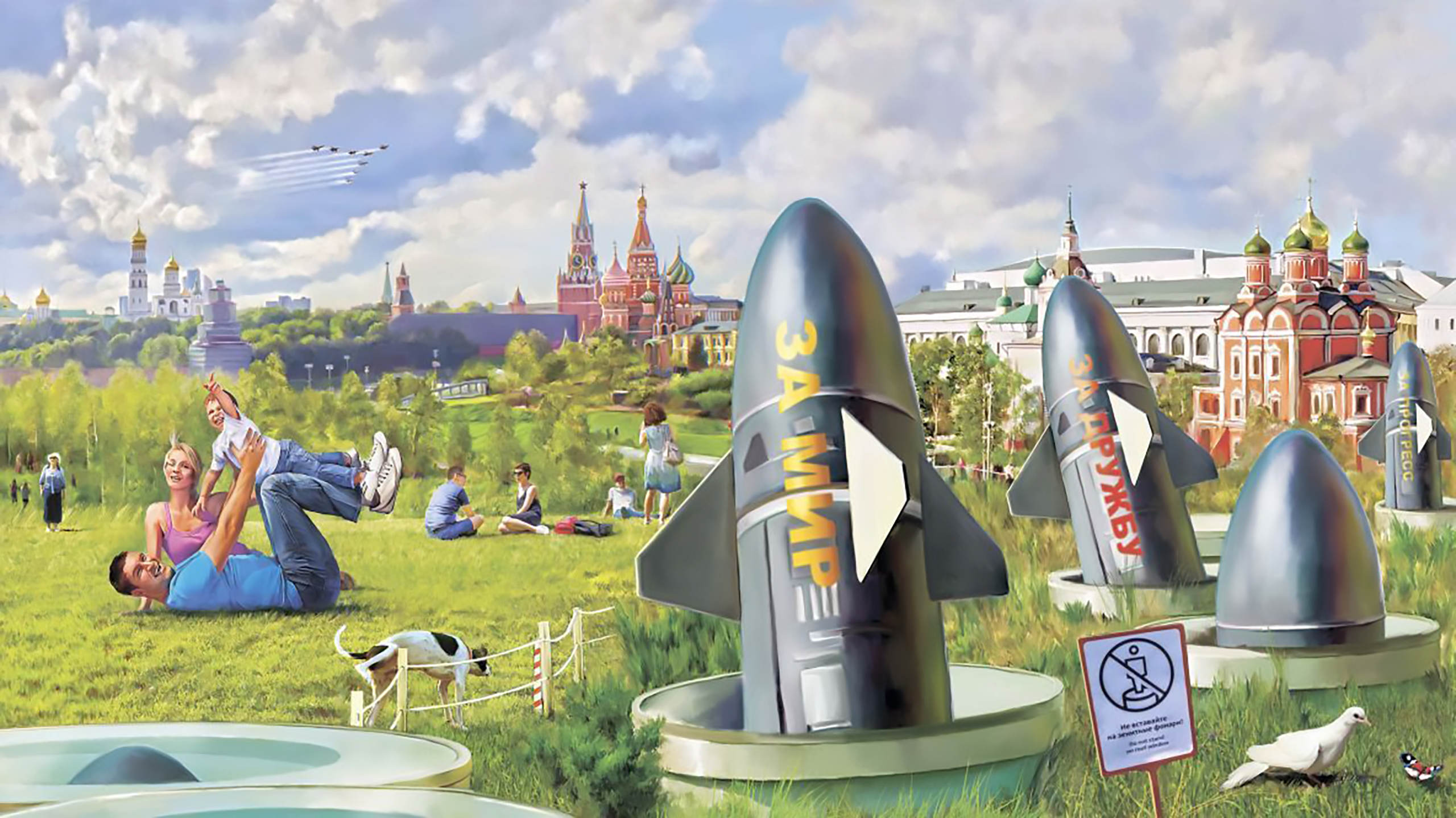
In the wake of ongoing war, however, it has become clear that the last instance “reality” of Russia’s “wild capitalist” 21st century—a reality at once thinly-obfuscated and deafeningly amplified by Zaryadye’s eco-imperialist shrubbery—is the inevitability of war. This inevitability is captured with unsettling, prophetic clarity in one of the artworks commissioned for the Institute of Zaryadyology’s 2018 exhibition at the Moscow Museum of Architecture, “Message of the Day” by Tatyana Baskovskaya and Hans Gnida (both names are pseudonyms).[6] This work—a digitally-reprinted watercolor painting—mocks the computer renderings of Zaryadye produced by its American architects and the publicity photographs of grinfully frolicking heteronormative white families circulated by the Moscow Mayoralty’s PR team.
In Baskovskaya and Gnida’s vision, the skylights of the Zaryadye “Media Centre” pavilion, whose undulating roof co-constitutes the park’s surface, morph into missile silos. The phallic rockets which protrude from them are marked with familiar propaganda slogans: “Za Mir” [For Peace] and “Za Druzhbu” [For Friendship]. These slogans, redolent not only of the name of “Za-Ryadye Park”, but also of official Soviet-era militarized pacifism and Russo-centric internationalism, have also been repeatedly invoked by Russian’s propaganda war machine since the invasion. In spoken as well as written form, their resonance is disturbingly amplified by their foregrounding of the letter “Z”.
Conclusion: Culture Z
In his seminal structuralist analysis of Soviet architectural history, culturologist Vladimir Paperny distinguishes between “Culture One”—horizontal, dynamic, open, future-oriented, epitomized by the avant-garde of the 1920s; and “Culture Two”—vertical, static, closed, fixated on the past, embodied in the Stalin-era Socialist Realism of the 1930s-1950s.[7] Paperny’s analysis suggests that Culture One and Culture Two exist in a constant dialectical struggle with one another—although the opposition between them in not absolute, a discernible variant of one of two poles of the binary tends to end up ascendant during discrete historical periods.
Paperny is skeptical about whether a Culture Three has or will ever crystallize—in more recent work, he has speculated that it may coalesce in the form of an “ecological avant-gardism”[8] whose—more or less disingenuous, greenwashed and gentrifying—instances are proliferating all over the world today, often in endlessly self-replicating forms: such as the emergent trend for land value-accelerating hyperinflationary urban parks sprouting atop disused (real or simulated) infrastructural facilities, set off by Paris’ Promenade Plantee and New York’s High Line (the latter of these designed by the same architects as Zaryadye, the famed Manhattan-based Diller Scofidio+Renfro); or the globally-proliferating “vertical forest” condominia franchised by Milanese architect-developer Stefano Boeri.
Both Zaryadye and the High Line rest on intriguing ideologies and aesthetics of wildness and rurality. For the High Line, DS+R developed the guiding principle of “agri-tecture”. In Moscow, the ideology of “agri-tecture” morphs into the idea of “wild urbanism”, defined in terms of a posthuman, “scriptless” and “pathless” symbiosis between nature and the city. Zaryadye’s rhetorics of wildness, freedom, pathlessness and spontaneity are, of course spurious obfuscations. Zaryadye—like the High Line—is hyper-sanitized, hyper-surveilled, hyper-controlled and policed space, both on the level of coercive, external control; and on the level of internal (and digital) discipline.
I would like to suggest, taking my cue from Paperny, that there are several emergent strands of political aesthetic false consciousness dominant in today’s accelerating wild capitalist moment. One might be called Culture Tree. This is the paradisiacal culture of normalized architectural greenwashing: monstrous resource depletion masquerading as sustainability and “ecological avant-gardism”. Another other is called Culture Free. This is the culture of hyper-centralization and the power vertical cosplaying as an attitude of de-centering and horizontality. Culture Free, in other words, is the culture of the fake horizontal. This is the Culture of the Pyramid scheme; of BitCoin and NFTs. Culture Tree and Culture Free, are intimately related and intersected, and Zaryadye—a top-down grand projet of sovereign magnanimity masquerading as site for free and spontaneous communion with nature—fuses elements of both of the above. In Zaryadye, the synthesis, which eluded Paperny has finally been reached. The pendulum has stopped at the culture of the new half-swastika embraced by the Russian state: Culture Z.
Epilogue
On 31 May 2022, Park Zaryadye’s official Telegram channel made an announcement about a new addition to the Florarium: “Za prem’eru [to the premiere]! The Zaryadye Florarium now contains an experimental breeding box devoted to the Donbas! It contains the steppe flora of the Donetsk and Luhansk oblasts—feathergrass, leatherflower, sage. You can find a rose there too—one of the symbols of Donetsk, ‘city of a million roses’.”
State war propaganda agency TASS cited Zaryadye chief gardener Evgeny Sapunov: “I hope that Zaryadye will soon contain plants not only from all the botanical gardens of Russia, but also from Russia’s near abroad”. On 8 June 2022, a delegation from the Donetsk People’s Republic visited Park Zaryadye and its Florarium. “Donbas is getting closer,” Zaryadye’s director Ivan Demidov posted on Telegram.
This text was featured in the exhibition Out Loud / Вголос / Na głos at Galeria Labirynt in Lublin, PL.
Michał Murawski is an anthropologist of architecture and cities. He is Associate Professor of Critical Area Studies at the School of Slavonic and East European Studies, University College London. His first book, The Palace Complex: A Stalinist Skyscraper, Capitalist Warsaw and a City Transfixed was published by Indiana University Press in 2019; and he is currently working on completing his second book, a critical study of politics and architecture in post-Soviet Russia. He is Director of the UCL SSEES FRINGE Centre for the Study of Social and Cultural Complexity; and convenor of PPV (Perverting the Power Vertical: Politics and Aesthetics in the Global East), a seminar and events platform based at UCL. For more information about publications, research and teaching, please visit www.michalmurawski.net.
Published 17 October 2022
- Russia’s ethnic minorities are drafted into the war in huge numbers through recruitment drives targeted at minority areas suffering from high unemployment and low incomes. Many soldiers from these regions have joined the army and have willingly participated in atrocities. Conversely, the war has sparked a revival in autonomist and separatist initiatives in Russia’s minority regions; and several associations representing indigenous groups and minorities have condemned the war. See, for example, “How the war in Ukraine catalyzed a re-awakening of national identity among Russia’s indigenous peoples”, 4FreeRussia.org, 20 May 2022. https://www.4freerussia.org/how-the-war-in-ukraine-provoked-a-re-awakening-of-national-identity-among-russias-indigenous-peoples/ [accessed 28 June]; and Adam Lenton, 26 (April 2022) “Who is dying for the ‘Russian world'”, Riddle. https://ridl.io/who-is-dying-for-the-russian-world/ [accessed 28 June].
- My thanks to Timur Liptonski for drawing my attention to this quote.
- Petr Kudryavtsev (ed.). (2017) Zaryadye, booklet, Moscow: Citymakers.
- Some of our trips to the workers’ gorodok—including the ones referred to here—are partly documented in a film by Egor Isaev, included in the Portal Zaryadye exhibition and available at https://vimeo.com/325180633 (accessed 28 June 2022). See also Egor Isaev, “On the Other Side of the Fence” in Daria Kravchuk and Michał Murawski (eds.). (2018) Portal Zaryadye (exhibition catalogue). Moscow: The State Shchusev Museum of Architecture / The Institute of Zaryadyology. pp. 22-23.
- I expand on the concealment of Zaryadye’s labour force behind the falshfasady of Zaryadye in Michał Murawski. (August 2022) “Falshfasad: Infrastructure, Materialism and realism in Wild Capitalist Moscow.” American Ethnologist, forthcoming.
- The Institute was an unofficial entity established by the author and collaborators during their field research in Moscow.
- Vladimir Paperny. (2011) Culture Two: Architecture in the Age of Stalin, Cambridge: Cambridge University Press [1985]
- Vladimir Paperny. (2012) Kul’tura Tri, ili kak ostanovit’ mayatnik?, Moscow: Strelka Press. pp. 8-11.

